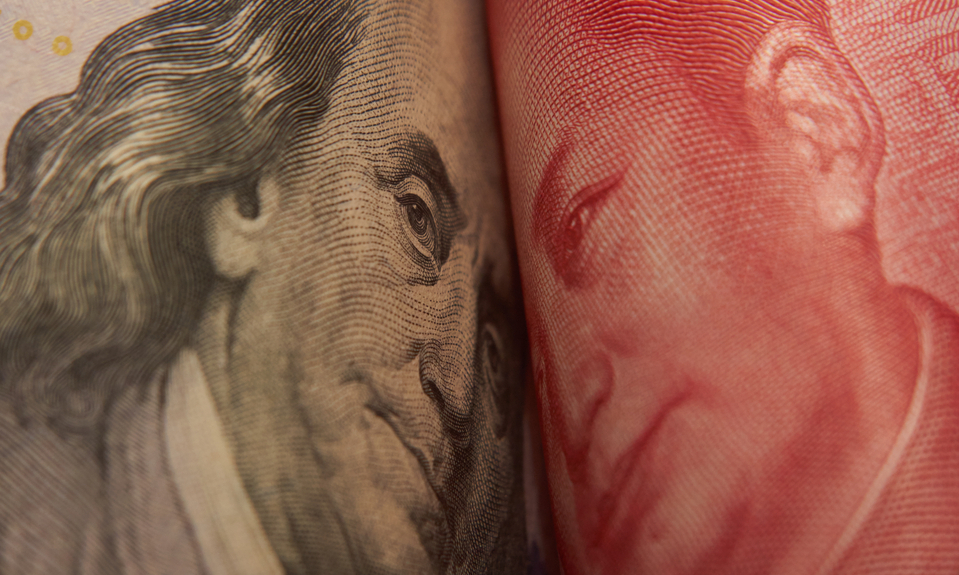Globalisation is not a block. It is made up of cycles. It repeats itself, but not identically. The current context of increased volatility in economic variables and geopolitical uncertainties places globalisation at the dawn of a new era.
Globalisation should not be seen as a process of convergence leading to a smooth, flat global space where technology, networked organisations and value chains allow large, established firms to combine and recombine their business blocks, in some cases by means of research and development (R&D), in many instances involving their production and sales capacities.
Over and above the aspect of geography, globalisation is also about the way national economies and the regions to which they belong interact at a higher – global – level. That is what I demonstrated in 2012 in the essay, Les Paradoxes de l’économie du savoir (“The Paradoxes of the Knowledge Economy”, published in French by Hermès Lavoisier).
A break in 2008
Between 1990 and 2022, the evolution of globalisation displayed a temporal discontinuity in global flows of exports, imports and foreign direct investments (FDIs) that can be broken down into three phases: hyperglobalisation (1990-2008), financial crisis and stabilisation of three variables (2008-2011) and relative deglobalisation (through 2022).
This observation allows for an interpretation that identifies globalisation as part of a cycle and, as such, it is likely to repeat itself, not in identical forms but by reorganising interconnections in response to multiple economic, technological and geopolitical constraints.
Read also: The globalisation of mistrust
Between 1990 and 2008, annual growth in global exports (10%) exceeded global GDP growth (6%). In many countries and regions (like the United States, the European Union and China), there was a strong correlation between trade flows and growth, which mutually reinforced each other. Structural transformations were in progress, worldwide industry’s share of global added value declined from 21% in 1990 to 16%, and the deindustrialisation of Northern countries played a bigger role than the industrialisation of the South.
The global trade system was supported by the creation of new institutions (like the European Union, the North American Free Trade Agreement and the Trans-Pacific Partnership Agreement) and was based on neoliberal ideology that focused on companies and markets, as well as on global rules for trade and investment flows put forward by the World Trade Organization (WTO).
China’s growing influence
The period following the financial crisis then created strong pressure for deglobalisation, between rising inequality and intensifying competition, the growing complexity of value chains and the increasing importance of geopolitical considerations.
The slowdown in world trade that began in 2011 went hand in hand with a downturn in global growth. Still, an analysis of this period calls for a separation of goods and services, since trade in manufactured goods shrunk from 15.6% of global GDP in 2011 to 14.5% in 2021, at a time when trade in services rose from 6% of global GDP in 2011 to 8% in 2021.
During the hyperglobalisation phase, trade flows reflected the economic and geopolitical power of the United States, while the phase of decline was shaped more by China’s growing influence, as demonstrated by two indicators. The trade-to-GDP ratio fell from 71% in 2008 to 35% in 2022, while the market share of China’s manufacturing exports out of all global exports jumped from 12% in 2008 to 22% in 2022.
This first indicator reflects China’s renewed focus on its domestic market and a change in direction for its economic policy, which now emphasises non-tradable assets, particularly property and infrastructure. This shift in the composition of production was orchestrated by public spending, with the effect of reducing the competitiveness of the tradable sector by causing wages and salaries to rise in the labour market.
Globalisation, the beginnings of a new cycle
The second indicator tells us that, in spite of weakening competitiveness, the productivity differential in favour of China when it comes to tradable goods is so high that exports continue to rise. At the same time, China developed the Regional Comprehensive Economic Partnership (RCEP), which includes 15 countries that collectively account for a third of global GDP and which represents the biggest free trade agreement in the world.
Today’s heightened volatility of economic variables and the uncertainties associated with geopolitical conflicts are introducing a new globalisation cycle. The challenges now facing China (its demographic crisis, slowed economic growth, low growth forecasts and the collapse of its property sector) are leading the country to redouble its efforts to acquire dominant positions in critical products and technologies whilst controlling exports of rare earth metals. This has given rise to an attitude in favour of de-risking China in the Global West in order to secure its supply chains and maintain access to products and technologies of strategic economic and geopolitical importance.
The idea is that there is no opposition between industrial policy and the markets. Not only can industrial policy correct market mechanisms, but it can also shine a light on the strategic choices companies make by directing their investments towards products and technologies that are essential to national security and carbon neutrality.
In this context, defensive measures are being taken. The fact of the United States and China raising multiple barriers to bilateral trade is driving companies to diversify their procurement sources and their locations. In China, FDIs backslid between 2014 and 2020, before collapsing between 2020 and 2023, plummeting from $400 billion to $15 billion, while those investments were rising dramatically in other regions like Latin America, Africa, Southeast Asia and India. The pronounced decline in Chinese imports to the United States resulted in the partial relocation of certain activities and by increased imports from Mexico (15% in 2023 compared to 13.9% for China), Vietnam, etc.
The challenge of economic security is imperative
In early 2024, the European Commission reached out to the United States, proposing several initiatives to strengthen economic security. First, the EC suggested developing FDI screening mechanisms that would evaluate the investments’ effects on critical infrastructure and technology, and identifying the most sensitive sectors (like semi-conductors, artificial intelligence and medicines). Second, it asked governments to assess the potential risks of investing in advanced technologies abroad.
A third initiative recommended controlling exports of dual-use (civil and defence) goods, whose R&D funding mechanisms need to be vastly improved. The final proposal was to equip research organisations with tools that will allow them to perform due diligence when entering into an international cooperation, so as to prevent information captures.
Generally speaking, industrial policy tends to include protectionist measures. The cycle of globalisation repeats itself, reinforcing the public forms of economic steering.






